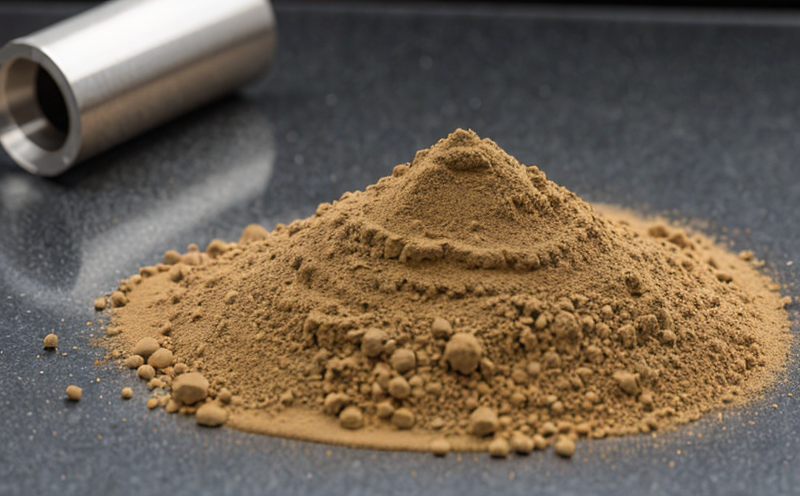ISO 75 Thermal Properties Characterization of Plastics
The ISO 75 standard provides a method for determining the thermal properties of plastics, which are essential in ensuring that materials meet performance specifications. This method is particularly important as it helps in verifying that raw materials used in additive manufacturing and other applications possess the required characteristics to ensure product quality and reliability.
Thermal properties such as heat deflection temperature (HDT), Vicat softening point, and glass transition temperature (Tg) are critical for predicting how a material will perform under different environmental conditions. These parameters are crucial in sectors like automotive, aerospace, electronics, and medical devices where the ability to withstand high temperatures without degrading is paramount.
ISO 75 thermal characterization involves subjecting specimens of thermoplastic materials to controlled temperature changes while measuring their deformation or melting point. This process requires precise control over temperature, force application, and specimen dimensions. The test results provide valuable insights into the material's behavior under various conditions, which is vital for quality assurance.
Specimen preparation plays a crucial role in ensuring accurate testing results. Specimens must be cut to standard dimensions as per ISO 75 guidelines. This ensures that all samples are tested under uniform conditions, eliminating variables introduced by specimen size or shape. The choice of specimens and their orientation can significantly affect the outcomes of these tests.
The equipment used for ISO 75 thermal testing includes differential scanning calorimeters (DSC) and thermomechanical analysers (TMA). These instruments provide precise measurements of thermal properties, making them indispensable tools in this field. The data generated from these machines is essential for comparing different materials or batches of the same material to ensure consistency.
Accurate reporting is critical when performing ISO 75 tests. Reporting should include detailed information about specimen preparation, test parameters, and results. It's also important to note any deviations from standard procedures that might have occurred during testing. This comprehensive approach ensures that all stakeholders can make informed decisions based on reliable data.
Understanding the implications of thermal properties is crucial for industries relying heavily on additive manufacturing technologies. By accurately characterizing raw materials using ISO 75, manufacturers can ensure their products meet stringent quality standards and perform reliably under expected operating conditions.
Applied Standards
| Standard Name | Description |
|---|---|
| ISO 75:1993 | Determination of the softening temperature by heat deflection test. |
| ASTM E260-98(2014) | Standard Practice for Conditioning Plastics and Electrical Insulating Materials Prior to Thermal or Electrical Testing. |
| EN ISO 75:2013 | Determination of the softening temperature by heat deflection test (plastics). |
The standards mentioned above form the backbone of thermal property characterization in plastics. Compliance with these standards ensures that tests are conducted under consistent conditions, leading to accurate and comparable results.
Quality and Reliability Assurance
Accurate determination of thermal properties through ISO 75 testing is vital for maintaining high standards in quality assurance. By ensuring that materials meet specified thermal characteristics, manufacturers can reduce the risk of product failure due to improper design or material selection.
The process begins with careful specimen preparation and continues through precise instrument calibration and standardized test procedures. Rigorous adherence to these protocols ensures consistency across multiple batches or suppliers, enhancing overall reliability.
Data interpretation is equally important; it involves not only understanding the numbers but also their implications for product performance in real-world applications. This knowledge helps engineers design products that can withstand harsh environmental conditions without compromising safety or functionality.
In summary, ISO 75 thermal characterization provides a robust framework for assessing plastic materials' suitability for specific uses. It supports industry best practices by promoting accurate measurement techniques and fostering confidence among all parties involved in the supply chain.
Use Cases and Application Examples
- Automotive Industry: Ensuring that parts remain functional under extreme temperatures without degrading or failing.
- Aerospace Sector: Verifying that materials used in aircraft components can withstand high-altitude conditions without losing integrity.
- Electronics Manufacturing: Confirming that circuit boards and other components endure operating temperatures without thermal expansion issues.
- MEDICAL Device Production: Guaranteeing that medical devices maintain their shape and functionality under varying temperature ranges during use.
These examples illustrate how ISO 75 testing contributes to various industries by providing assurance regarding the physical properties of plastics, thereby supporting safer, more efficient product development processes.





